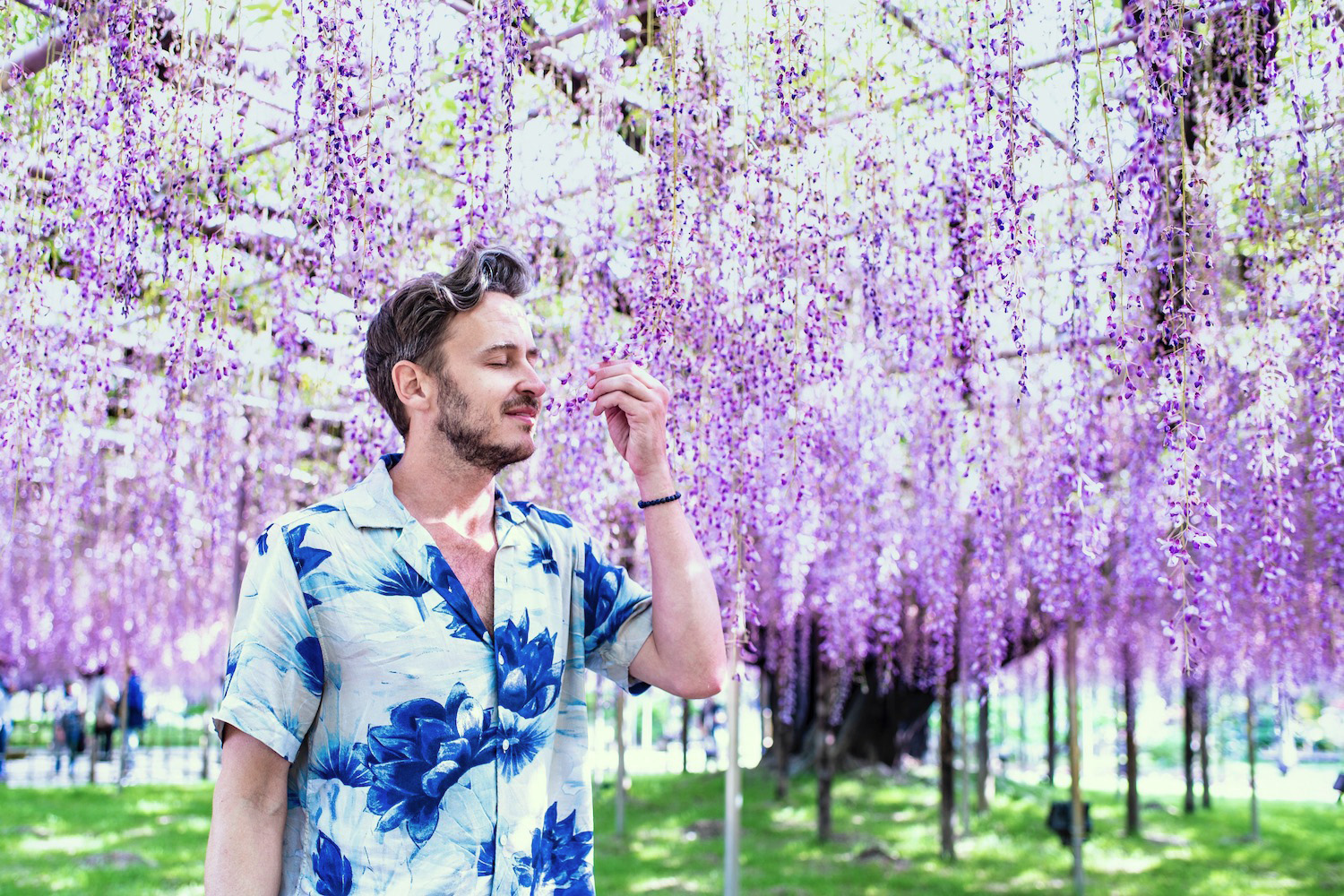When you arrive at the Ashikaga Flower Park train station, you’ll notice that the stairs bear the message “A City Where Dreams Come True.” The message, not surprisingly, is super-imposed over an image of the park’s famous wisteria.
Actually, that’s a lie: You’re most likely to notice the message (and the picture) as you’re leaving the station, since you need to be going up the stairs (it’s elevated) in order to see it.
While perhaps not a perfect metaphor for visiting the park, I do think this is a good place—rhetorically speaking—to start our discussion as to why people come, and whether (or not) doing so is worth it for you.
Why Seeing Wisteria in Japan Can Be Such a Challenge
Whether you go to Ashikaga Flower Park or to the “wisteria tunnel” north of Fukuoka, it can be a big pain to see fuji (藤, the Japanese word for wisteria) in Japan. And not just because visiting Kawachi Fujien (where you find the aforementioned tunnel) is such a damn pain. Even after buying advance tickets online and getting yourself to Kokura (the actual nearest train station), you still need to rent a car.
To say nothing of the timing. While wisteria generally bloom between late April and early May, determining precisely when to see them is difficult. Fuji are less fickle than sakura, to be sure. However, there are also fewer people monitoring the former than the latter; they do so much less intently. As a result, most travelers—even those motivated enough to come to Japan to see “secondary flowers”—are flying blind.
The Best Flowers to See at Ashikaga Flower Park
Wisteria
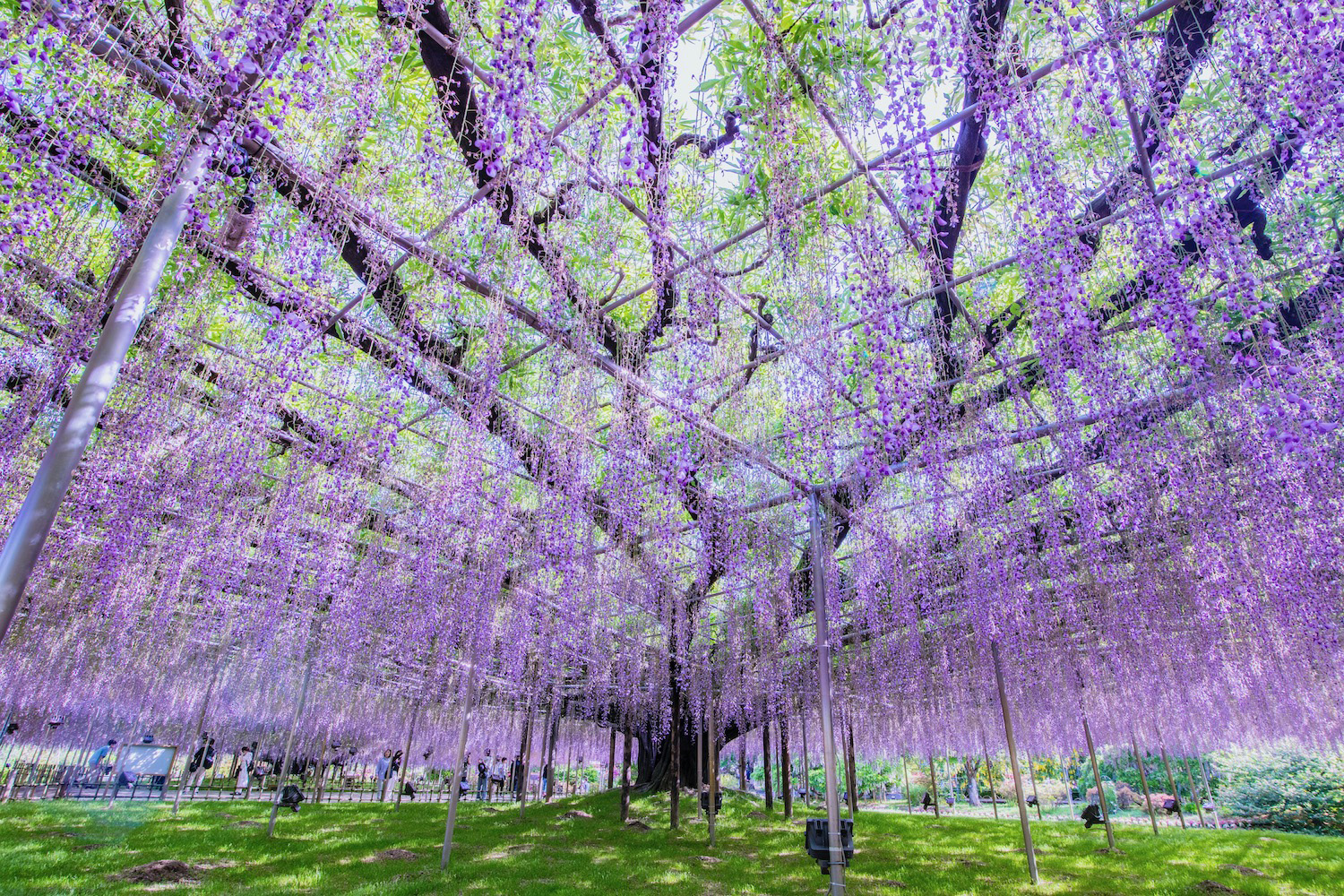
While the massive, 200-year old wisteria tree at the center of the park is Ashikaga’s most famous resident, it isn’t the only fuji within its fence. Many different trees and vines exist, including several that are white and yellow, in addition to the trademark purple. (TIP: For a sweet treat, make sure to eat delicious wisteria soft cream!)
Azaleas
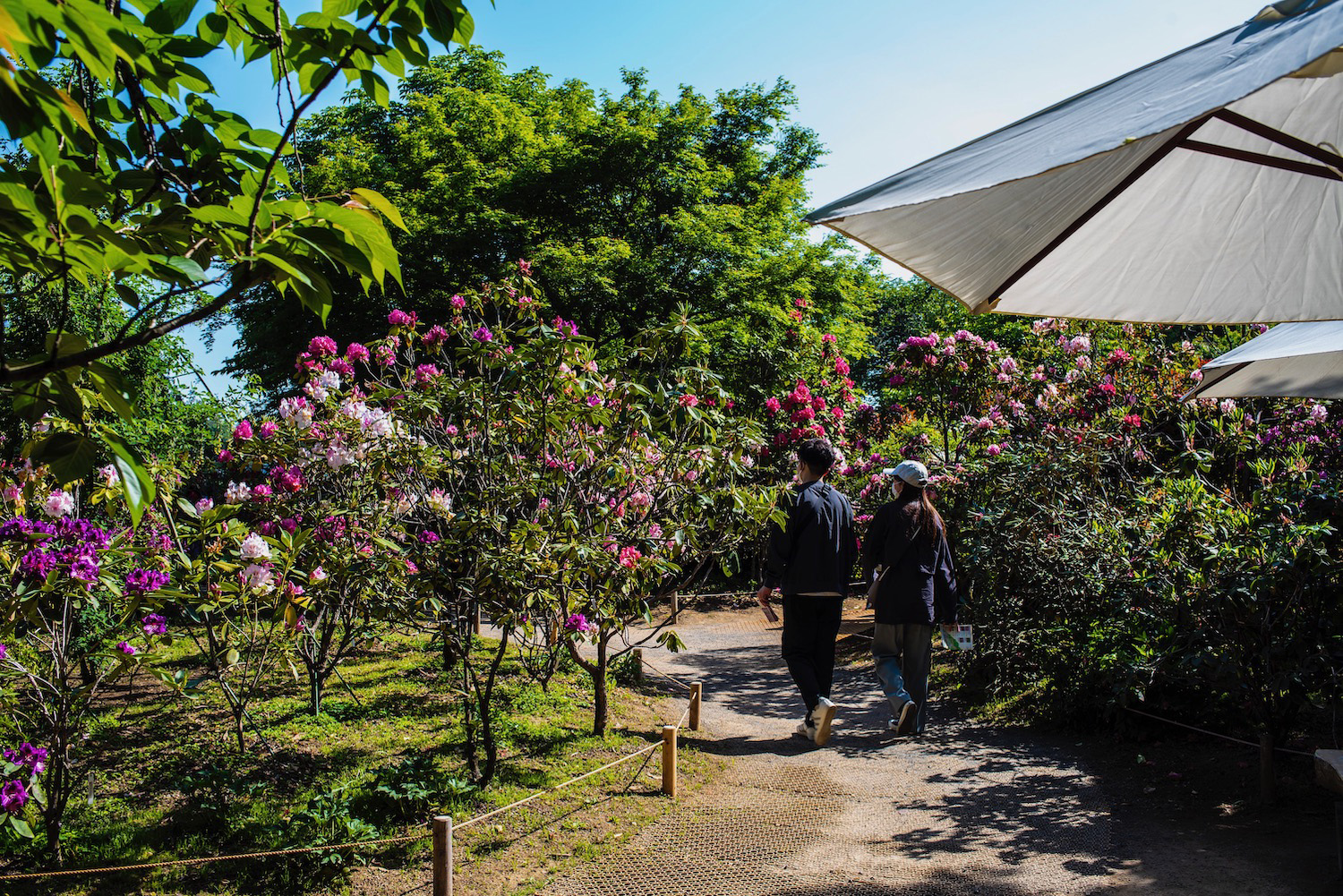
Another advantage of visiting Ashikaga Flower Park in spring is the fact that there are so many tsutsuji (つつじ) or azaleas in bloom. This isn’t an especially popular place to see them in the Kanto region (Mito’s Kairaku-en and Tokyo’s Nezu Shrine take that cake), but they’re still a standout.
Roses
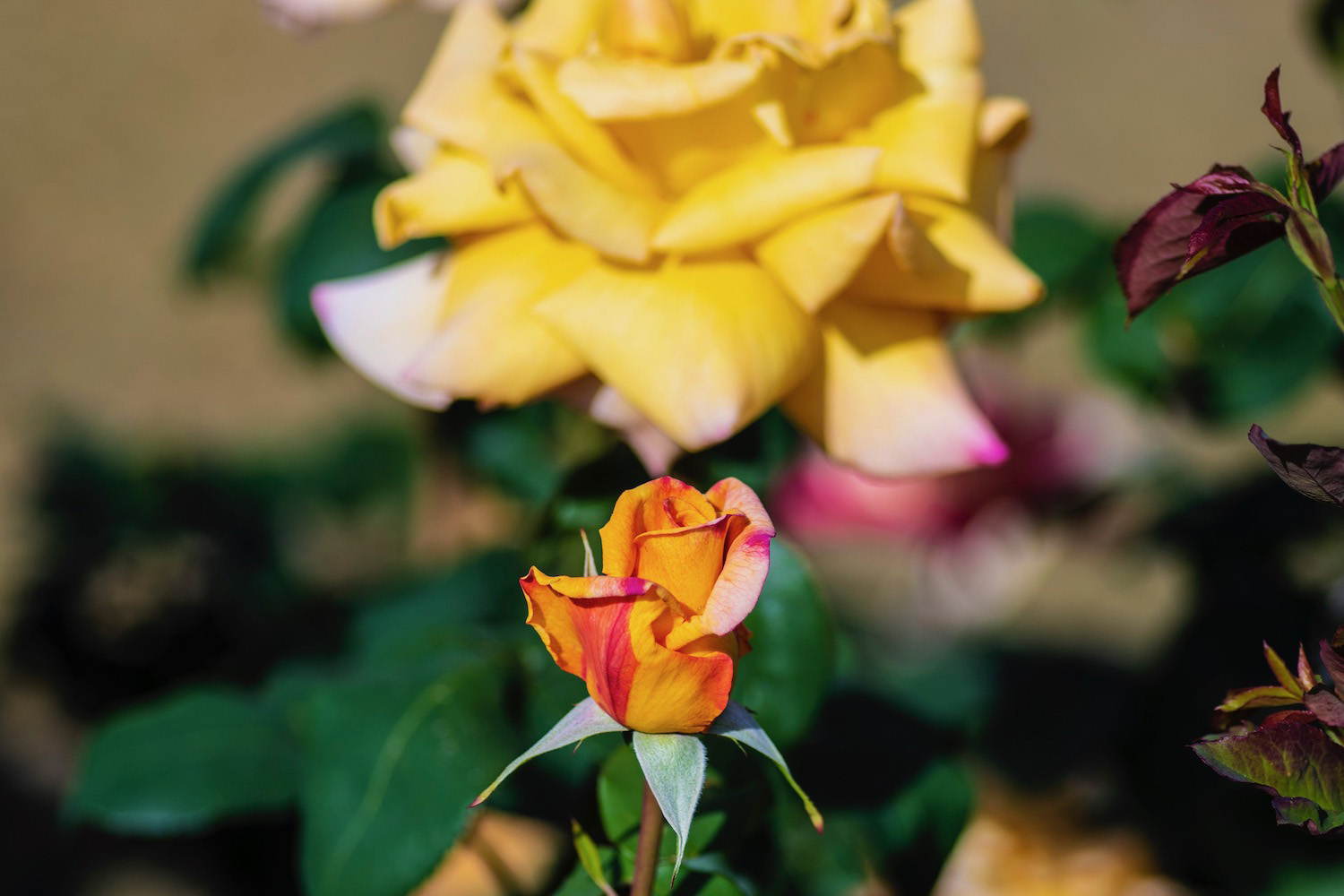
As are the roses, even if they generally aren’t even associated with Japan. Still, whether to enjoy the beautiful fragrance, or simply to take a break from peeping other more traditionally Japanese flowers, the manifold colors, shapes and sizes of the roses her are worth a visit all on their own.
Petunias
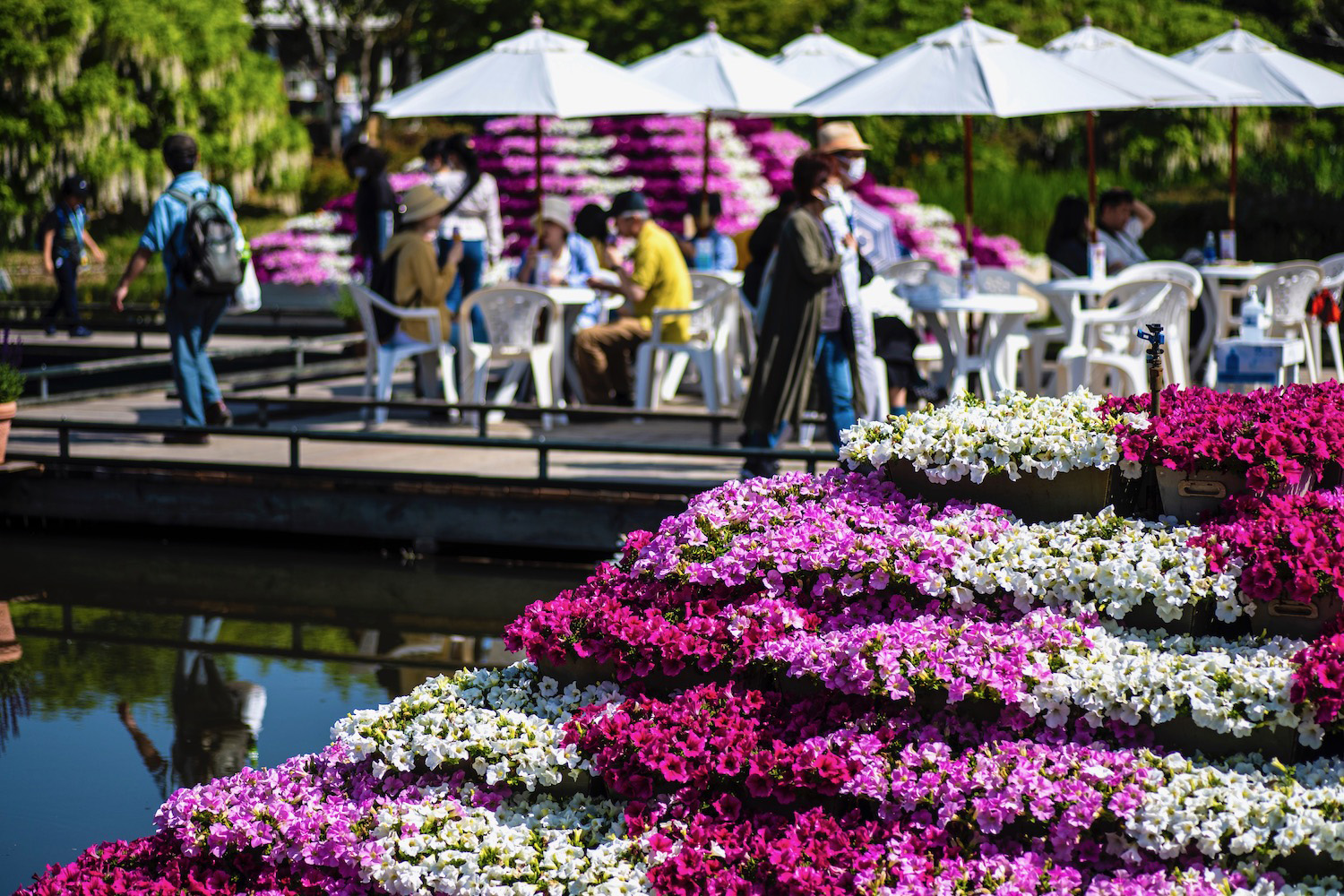
Ashikaga Flower Park turns flowers into art, which means that it sometimes relies less on nature and more on the creativity of people. While I wouldn’t normally list a quotidian flower like the petunia as a highlight, the way the staff at Ashikaga arranges them is nothing short of breathtaking.
Peonies
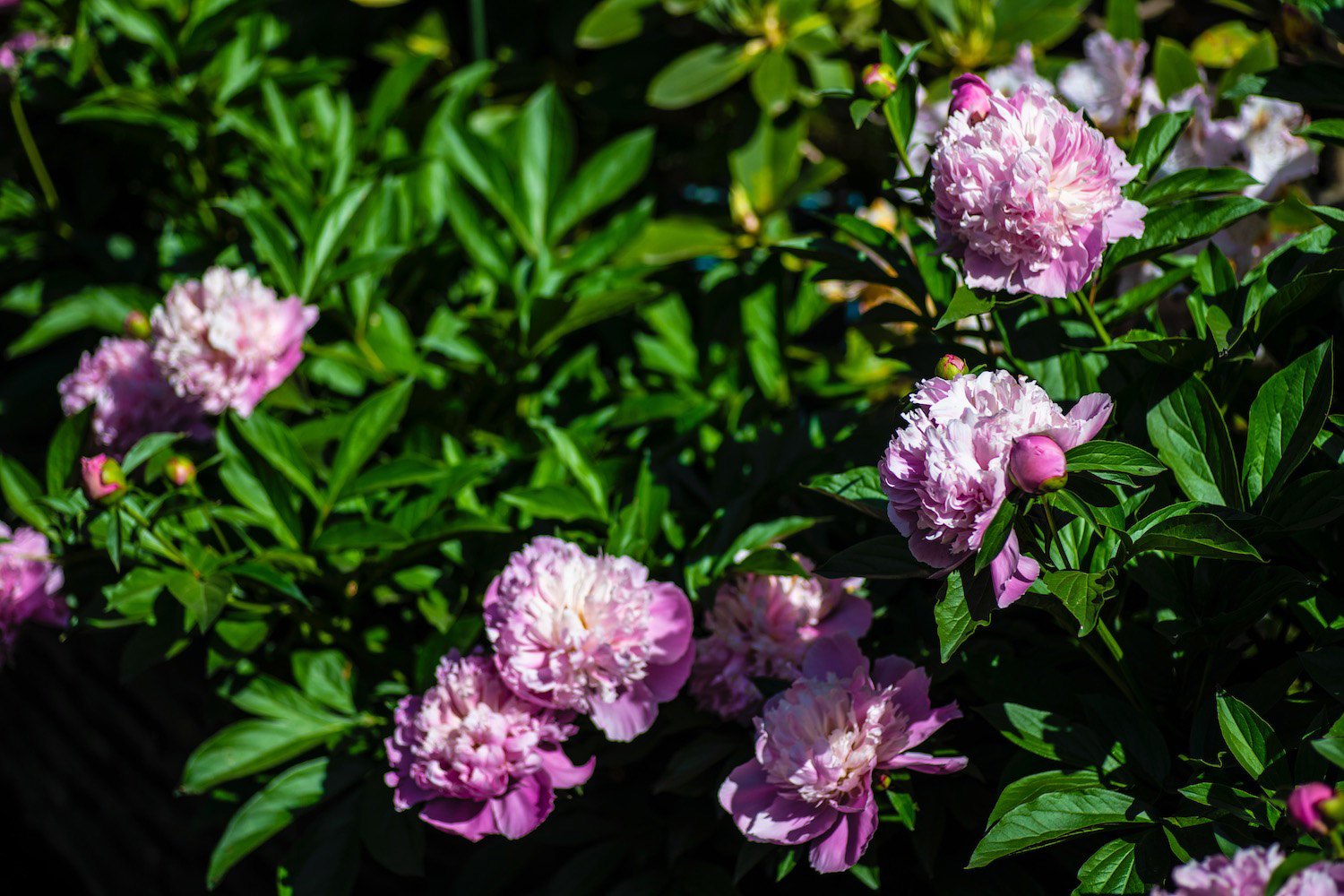
Finally, there are the peonies. These aren’t as dramatic as the wisteria, as colorful as the azaleas, as numerous as the roses or as creative as the petunias. Still, whether for the sweetness they give off or simply the majesty of how their voluptuous buds explode into full flowers, I love seeing peonies when I come to Ashikaga Park.
Is Ashikaga Flower Park Worth Visiting?
Ashikaga Flower Park is a delightful place, but I’m not quite sure it lives up to the slogan you see on your way out. Wisteria aren’t the only game in town, to be sure. With this being said, however, it’s difficult for me to imagine a trip to the park being worth it when the wisteria aren’t in bloom. I love roses and azaleas; you can find them literally everywhere else in Japan that has flowers.
A possible exception to this rule might be if you’re staying somewhere in Tochigi prefecture, but even that comes with qualifications. You’re likely—if you’re in Tochigi, this is—to be in Nikko, which is just as far from Ashikaga Flower Park as Tokyo is. You’d really need to be in Tochigi City or in Oyama, which is unlikely unless you have business there, or are residing there.
Other FAQ About Ashikaga Flower Park
Is Ashikaga Flower Park worth it?
Ashikaga Flower Park is certainly worth visiting if you happen to be in Japan during wisteria season, or if you’re going to be staying somewhere in Tochigi prefecture, or don’t mind the journey to get there from Tokyo. If neither of these things are true, I probably wouldn’t recommend going.
How long do you need at Ashikaga Flower Park?
Ashikaga Flower Park will take, at most, half a day of your time—it’s not big enough to spend the whole day there. A possible exception might be if you decide to go there in the morning, but also want to stay to watch the nighttime illumination.
When should I go to Ashikaga Flower Park?
Given that it’s primarily famous for its wisteria, you’ll probably want to visit Ashikaga Flower Park during the last week of April or the first week of May. There are flowers in bloom there during other months of the year, but no flowers you can’t find elsewhere in Japan.
The Bottom Line
Ashikaga Flower Park is a beautiful place to visit year-round, but making the trek is probably only worth it (for most travelers) when its famous wisteria bloom in late April and early May. This is less because of the park itself—while perhaps not a place “where dreams come true,” it is gorgeous—and more because it isn’t especially convenient from Tokyo, at least without a compelling reason such as Japan’s oldest fuji-no-ki. Want to make sure your next trip to Japan hits all the perfect notes, regardless of which season it is, and what is (or isn’t) in bloom? Consider hiring me to plan it.



